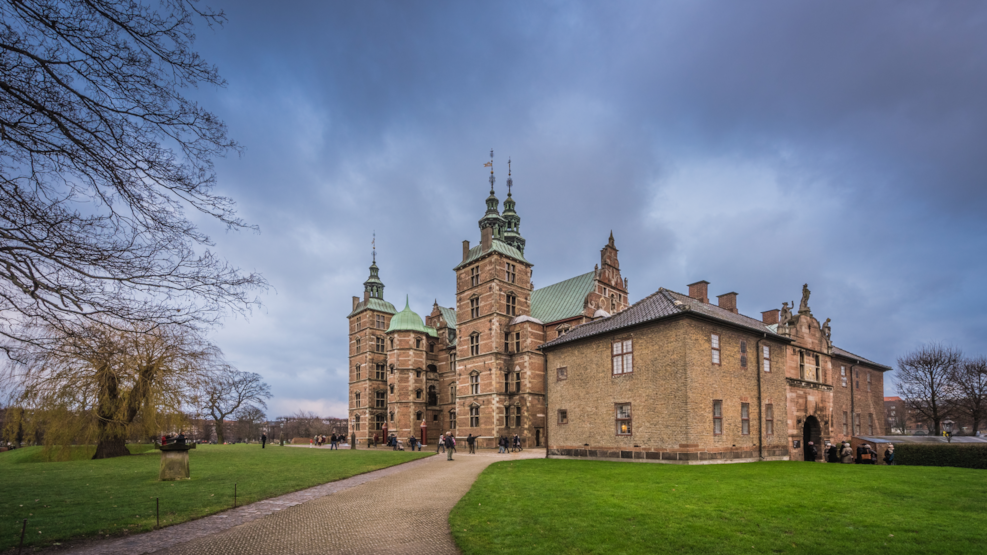
Rosenborg Castle
Rosenborg Castle in Copenhagen houses some of Denmark's greatest cultural treasures. The castle was built 1606-34 by Christian IV as a pleasure palace. In the basement you will find the Danish crown jewels and royal crowns.
Rosenborg Castle was built by one of the most famous Danish kings, Christian IV, in the 17th century. The beautiful castle features 400 years of royal treasures, and the Crown Jewels and Royal Regalia.
Walk up the spiral steps and discover rooms filled with royal details and lavish portraits. Among the main attractions is the Knights’ Hall with the coronation thrones, decorated with narwhal tusks, with three life-size silver lions standing guard. Tapestries on the walls commemorate battles between Denmark and Sweden.
The interiors are well-preserved and invite you to take a journey in time, stepping into the shoes of the royalty that once lived here. You can see the king’s private writing cabinet, his bathroom, and view wax figures of former royal inhabitants.
Rosenborg also houses an exquisite collection of Flora Danica and one of the world’s finest Venetian glass collections, both set in tower chambers.
TRAVEL TIP: With a Copenhagen Card in hand you get free admission to Tivoli and over 80 attractions as well as free public transportation in the whole capital region.
Denmark's crown jewels
The delicate and glittering crowns of the Danish kings and queens are kept in special vaults at Rosenborg Castle, embellished with table-cut stones, enamel, and gold. The crown jewels primarily consist of four garnitures: a diamond set, a ruby set, a pearl set, and an emerald set – the emeralds being among the world’s finest.
Portraits of a scandal
The castle also displays portraits of scandal-hit Johan Friedrich Struensee and Queen Caroline Mathilde. Caroline Mathilde was married to the controversial King Christian VII and had a fatal love affair with Johan, the king's physician. When King Christian VII became too ill to govern, Struensee led the country for almost two years. He was arrested and executed in 1772, after which Caroline Mathilde was exiled to northern Germany. The portrait of Struensee is from 1824 by Hans Hansen and is a copy of a painting from the hand of painter Jens Juel. The portrait of Queen Caroline Mathilde is from 1771 and was painted by Jens Juel.
If you want to find out more about the history of the Danish Royal Family, Rosenborg Castle has a sister museum at Amalienborg Palace displaying royal history from the mid 19th century until today.
Rosenborg Castle is part of the museum district Parkmuseerne in and around King’s Garden. A ticket to Parkmuseerne costs 245 DKK and gives you access to all six great museums in one ticket. Tickets are sold at all of the six museums.